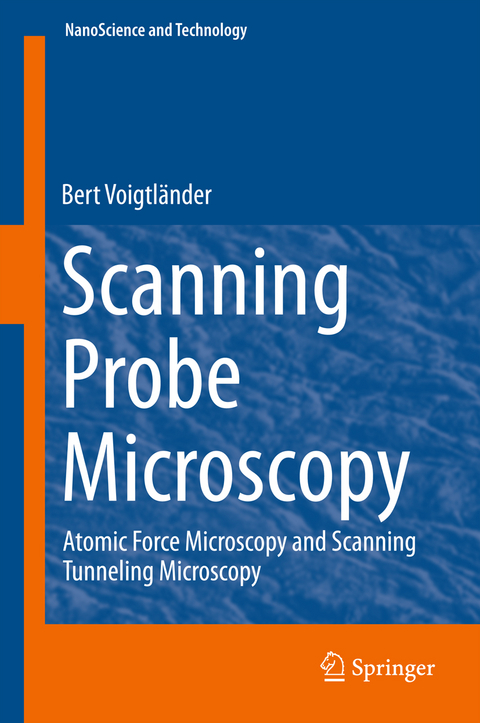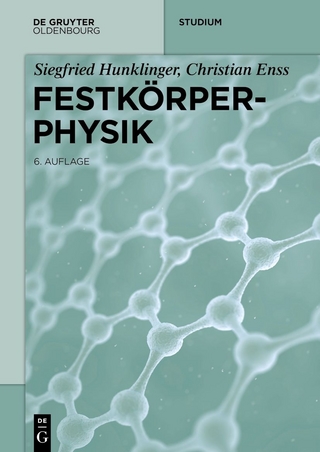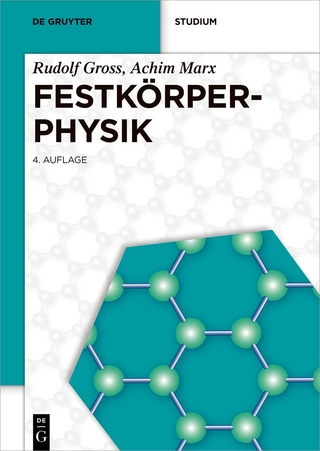Scanning Probe Microscopy
Springer Berlin (Verlag)
978-3-662-45239-4 (ISBN)
This book explains the operating principles of atomic force microscopy and scanning tunneling microscopy. The aim of this book is to enable the reader to operate a scanning probe microscope successfully and understand the data obtained with the microscope. The chapters on the scanning probe techniques are complemented by the chapters on fundamentals and important technical aspects. This textbook is primarily aimed at graduate students from physics, materials science, chemistry, nanoscience and engineering, as well as researchers new to the field.
Introduction.- Harmonic Oscillator.- Technical Aspects of Scanning Probe Microscopy.- Scanning Probe Microscopy Designs.- Electronics for Scanning Probe Microscopy.- Lock-In Technique.- Data Representation and Image Processing.- Artifacts in SPM.- Work Function, Contact Potential, and Kelvin Probe Scanning Force Microscopy.- Surface States.- Forces Between Tip and Sample.- Technical Aspects of Atomic force Microscopy (AFM).- Static Atomic Force Microscopy.- Amplitude Modulation (AM) Mode in Dynamic Atomic Force Microscopy.- Intermittent Contact Mode/Tapping Mode.- Mapping of Mechanical Properties Using Force-Distance Curves.- Frequency Modulation (FM) Mode in Dynamic Atomic Force Microscopy.- Noise in Atomic Force Microscopy.- Quartz Sensors in Atomic force Microscopy.- Scanning Tunneling Microscopy.- Scanning Tunneling Spectroscopy (STS).- Vibrational Spectroscopy with the STM.- Spectroscopy and Imaging of Surface States.- Building Nanostructures Atom by Atom.
"The book attempts to provide a technical, theoretical, and conceptual framework to understand how SPM works and what can be done with it so that a reader wishing to further learn about newer topics will have the basis to do so. This book could thus serve as a useful reference and textbook for anyone desiring an advanced introduction to the fascinating world of SPM." (Sidney Cohen, MRS Bulletin, Vol. 41, February, 2016)
"The contents of this book are presented in a very clear didactic manner ... . In addition, it includes the foundations of many technical aspects that are not necessarily a part of the methods themselves, but which in practice are required for the application. ... What I particularly like, is the fact that it discusses common artefacts occurring in scanning tunneling microscopy. Such discussions are rare in the literature, although they are essential for a complete training of young scientists. To my mind the book is well suited not only for physicists, but also for chemists, materials and nano-scientists and others with similar background." (Quote translated from German, Jascha Repp, Physik Journal, issue 4, 2016)| Erscheint lt. Verlag | 23.3.2015 |
|---|---|
| Reihe/Serie | NanoScience and Technology |
| Zusatzinfo | XV, 382 p. 189 illus., 148 illus. in color. |
| Verlagsort | Berlin |
| Sprache | englisch |
| Maße | 155 x 235 mm |
| Gewicht | 734 g |
| Themenwelt | Naturwissenschaften ► Physik / Astronomie ► Festkörperphysik |
| Naturwissenschaften ► Physik / Astronomie ► Thermodynamik | |
| Technik ► Elektrotechnik / Energietechnik | |
| Technik ► Maschinenbau | |
| Schlagworte | Atomic force microscopy • Cantilever detection methods • Non-contact AFM • Non-Contact Atomic Force Microscopy • Scanning Force Microscopy • Scanning Probe Microscopy • Scanning Tunneling Microscopy • scanning tunneling spectroscopy |
| ISBN-10 | 3-662-45239-1 / 3662452391 |
| ISBN-13 | 978-3-662-45239-4 / 9783662452394 |
| Zustand | Neuware |
| Haben Sie eine Frage zum Produkt? |
aus dem Bereich




